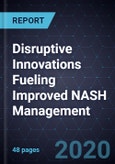Non-alcoholic steatohepatitis (NASH) is a chronic liver condition whose prevalence across the globe continues to rise year on year. The liver disorder is considered very dangerous as its symptoms can be mistaken for other liver disorders and conditions in addition to the disease quickly progressing to result in liver failure for the patients.
The increasing prevalence of NASH in its more severe form can be attributed to the lack of validated and approved in vitro diagnostic tests for NASH specifically which makes it tough for physicians to catch the disease early. In addition, a lack of any approved treatments on the market till now has made it harder to curb the increase of NASH disease globally.
This global research service provides extensive information about the disruptive innovations currently in the advanced clinical pipeline for NASH treatment and related market insights. The market forecasts assess the potential market for an approved NASH treatment.
Non-alcoholic Steatohepatitis (NASH): Global Strategic Business Report
- Report
- 179 Pages
- Global








